It’s hard to believe that just 10 years ago, Steve Jobs introduced the first iPhone at MacWorld in San Francisco. Since then, the smartphone, that ubiquitous device and our best friend, has become ingrained in our daily routines from morning to night.
We respond to work issues from commuter trains or the gym, share photos of our tropical vacations, ask Siri what the weather is back home in New York City. And yes, some of us – surprisingly few, actually – use it to make a phone call from, well, wherever we happen to be.
Since the first iPhone was released in 2007, smartphone makers have fed consumer desires for more features and power, while app makers have simplified and automated nearly every aspect of daily life – tasks far beyond the mobile phone’s original purpose, which was being able to make a call from anywhere. All of which makes the device incredibly tantalizing and hard to put down.
Our relationship with our smartphones begins with our choice of device. Although Apple competes in a crowded market, it and Samsung are the most popular brands. According to a new survey by ReportLinker, 37% of Americans say they own an iPhone, while 33% say they have a Samsung. Millennials, it should be noted, seem to be more attracted by Apple’s products, as half say they own an iPhone.
What does a typical day of smartphone use look like? Nearly half (46%) of Americans say they check their smartphones as soon as they wake up, while they’re still in bed, according to ReportLinker’s survey results. This is especially true of Millennials, 66% of whom say it’s the first thing they do before getting out of bed
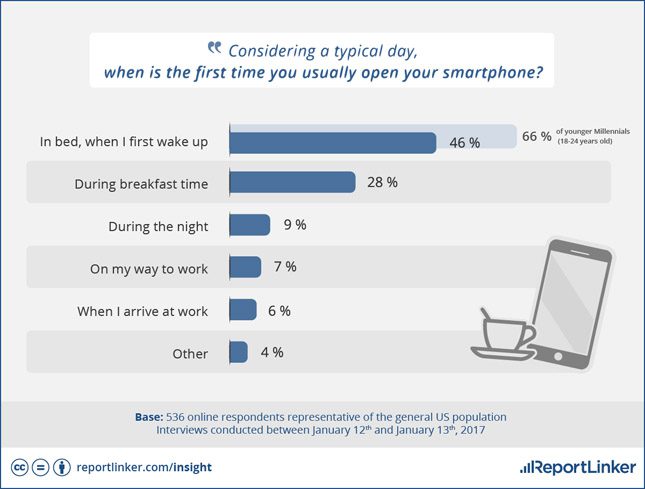
When they first open their smartphone, connecting with friends and relatives is top of mind. More than 30% of US respondents say they open their email first, the same percentage who say they first open social media apps.
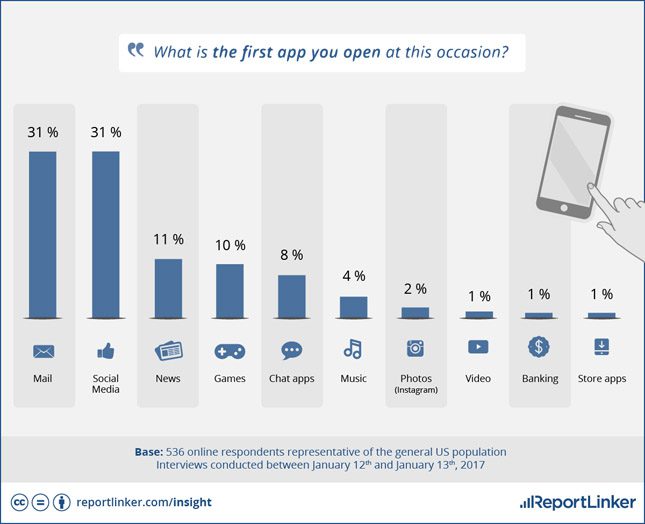
In fact, the smartphone is predominately about connecting with others. According to ReportLinker’s survey, 37% of Americans say they most often use their smartphone for making a phone call, while 26% say they primarily use it to text. In addition, US respondents said they used social media apps such as Facebook, Twitter and LinkedIn more often than other types of apps.
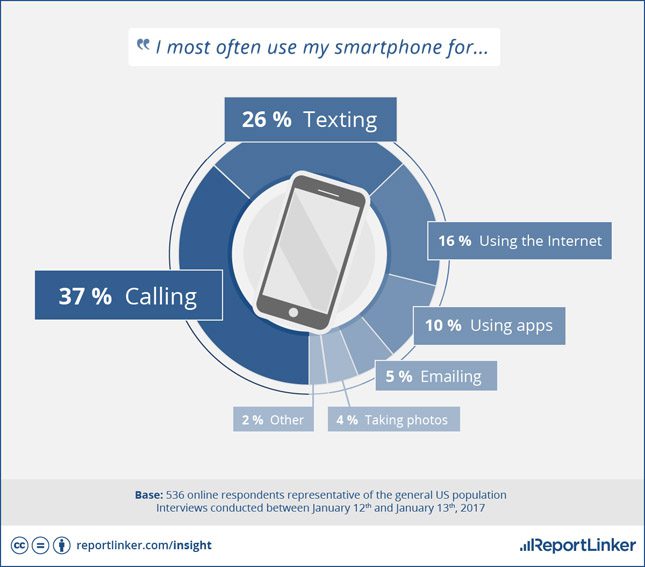
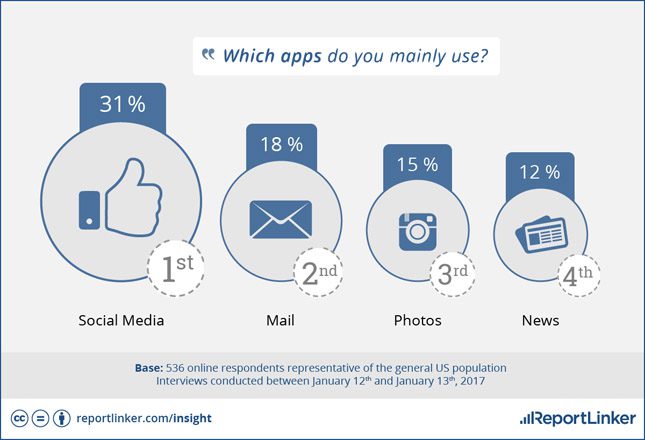
When it comes to work, however, 56% of US respondents say they limit personal smartphone use while at the office. But with more Millennials in the workforce than any other generation, there is substantial blurring of the lines between work and personal use of smartphones. ReportLinker found that 60% of Millennials – and 66% of older ones – confess to using their smartphone at work for personal matters.
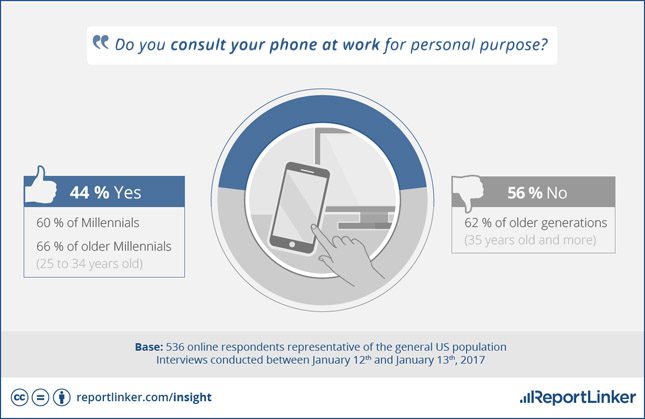
By the end of the day, you might think smartphone users would be ready to disconnect and put them away, but there’s evidence they’re smitten with the device. Three-quarters of all US respondents to ReportLinker’s survey say they keep their smartphones active all day and night, and a staggering 83% of Millennials say they do. Perhaps not surprisingly, those users who say they check their phones first thing in the morning are more likely to say they never switch it off.
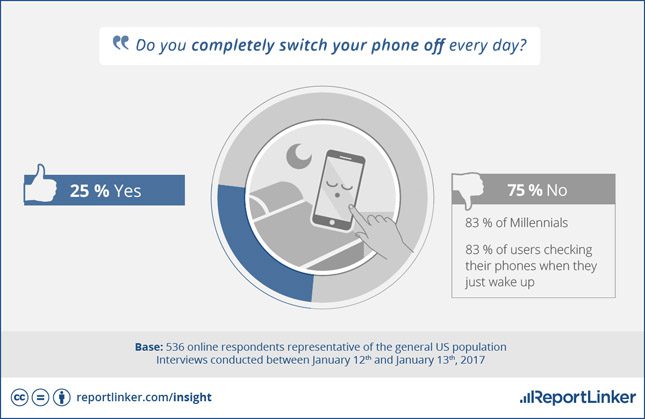
In fact, disconnecting can be hard. More than half of Americans say their last check is right before bed – and 13% say they disconnect only after they’ve gotten into bed for the night. Even after they fall asleep, about 10% say they’ll wake up and check it during the night.
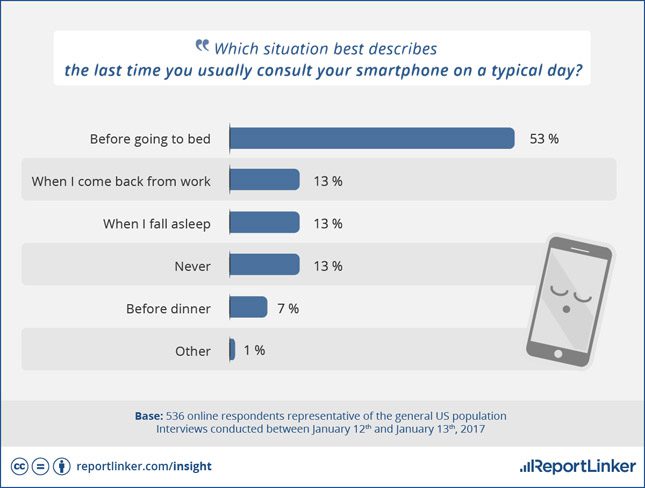
With the use of smartphones greatly expanded from its original function of making calls, what’s next? Two trends dominating the Consumer Electronics Show this January may provide a hint: artificial intelligence and machine-learning.
Voice technology was first integrated into smartphones more than five years ago, first with Google’s voice actions on Android phones, then when Apple introduced Siri. But Amazon’s Alexa voice assistant is making rapid advances and was both a holiday and CES favorite. Alexa’s growing sophistication may mean we’re likely to see rapid improvement in smartphones’ voice capabilities and utility as this technology is either integrated or modeled by smartphone makers.
Indeed, smartphone users are ready for greater sophistication in voice assistants. Nearly sixty percent of smartphone users say they know their devices have voice capabilities, and more than 50% of these users say they’re using it. Apple’s Siri is better known than Samsung’s, with 84% of iPhone users saying they’re aware of it, compared to just 45% of Samsung owners, according to ReportLinker.

For those who do use their VA, nearly half use voice commands to search the internet. Texting, dialing a phone number, and managing one’s calendar round out the top four voice command tasks.
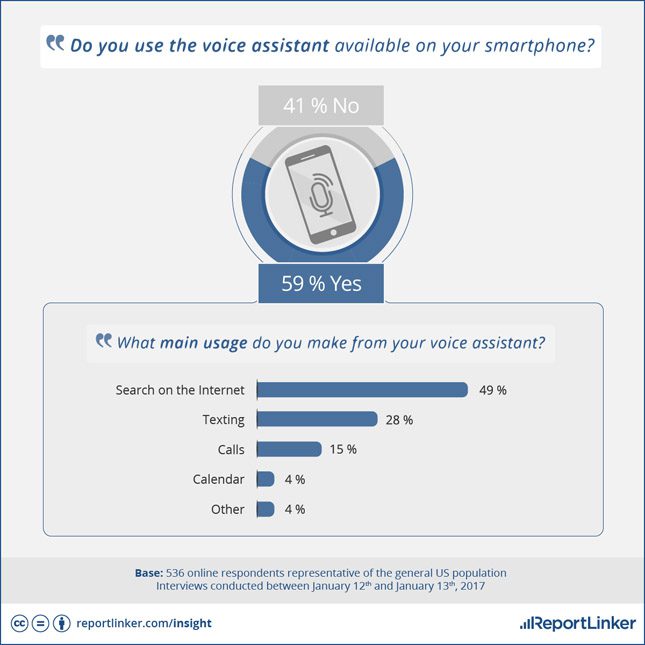
Innovations such as these have driven the marketing and sales cycle, enabling smartphone makers to increase demand with new features, design, or incremental innovation. And it’s why 43% of owners say they upgrade to a newer model every year, while most don’t keep their phones longer than two years. Less than a quarter of US respondents say they own a phone that is more than two years old, according to ReportLinker.
Disposal of old phones is an issue for more than a third of respondents whenever they upgrade. More than a third of Americans say they keep their old smartphones rather than take advantage of disposal options. Almost a quarter say they hand down their old phones to relatives or friends while 18% take advantage of retailers’ electronics recycling programs.
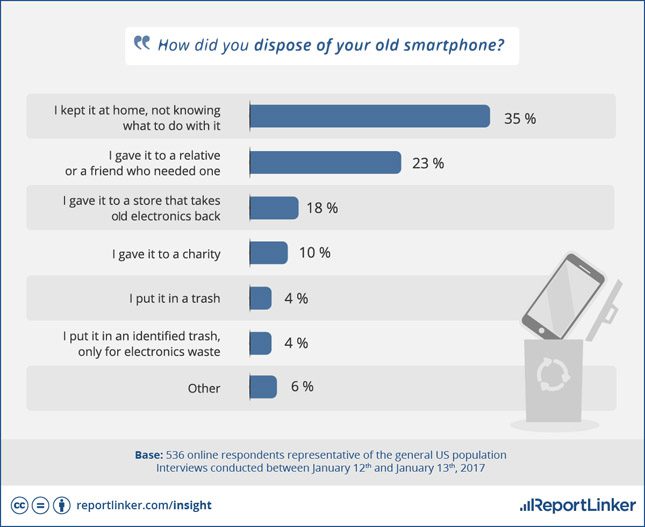
When it’s time to trade in the old for the new, smartphone users undoubtedly will discover new uses and capabilities. While the smartphone has grown up quite a bit in its first 10 years, it still hasn’t reached its full potential. Yet, if rumors are to be believed, Apple may raise the bar significantly higher, with the introduction of the 10th anniversary iPhone later this year. If the smartphone’s second decade is as revolutionary as its first, we’re in for exciting times.
From tradition to transformation Sequoia Brass & Copper has stood for excellence in American manufacturing. In this episode, we sit down with Kim MacFarlane, President of Sequoia Brass & Copper, to hear the inspiring story of a family-owned company founded by her father, built on craftsmanship, trust, and a relentless commitment to quality. Kim shares how she’s guided the company through the challenges of modern industry while honoring its heritage, and how the next chapter will be carried forward by her son Kyle. This is more than a story of brass and copper; it’s about resilience, innovation, and the enduring strength of family legacy. If you’ve ever wondered how tradition can meet the demands of today’s industry hit play and be inspired.